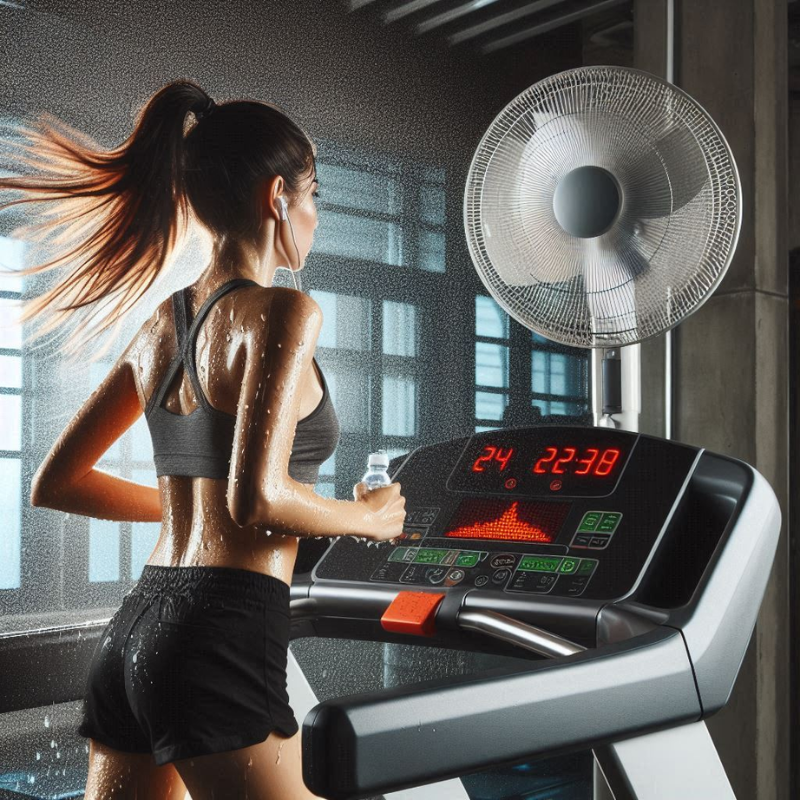Is your treadmill heating up more than usual? You’re not alone. Excessive treadmill heating is a common problem affecting many fitness enthusiasts, from beginners to experienced athletes. But why does this happen, and what can you do about it?
Whether you’re concerned about your equipment’s longevity, looking to optimise your training experience, or simply curious about how your treadmill works, this article has something for you. Get ready to become an expert in treadmill care and discover how to keep your equipment running cool and efficiently for years.
Ready to unravel the mystery of treadmill overheating? Let’s begin!

Main Causes of Treadmill Overheating
1. Excessive Friction
Friction is undoubtedly the most common and significant cause of treadmill heating. When you run or walk, the belt constantly slides over the deck, generating heat through friction. This process is natural and expected, but several factors can exacerbate the problem:
- Misalignment: A poorly aligned belt can rub against the deck edges, creating high-friction points
- Improper belt tension: An overly tight belt increases resistance and, therefore, friction. To make sure your belt is properly tensioned, check out our guide to finding out if your treadmill belt is properly tensioned and how to fix it.
- Surface wear: Over time, both the belt and deck can wear down, increasing roughness and friction
- Dirt accumulation: Dust, sweat, and other debris can accumulate between the belt and deck, acting as an abrasive. Learn how to keep your treadmill clean with our guide.
2. Motor Overload
The motor is the heart of the treadmill, and when working beyond its capacity, it can quickly overheat. This excessive heat transfers to other components, including the belt. Motor overload causes include:
- Undersized motor: If the motor isn’t suitable for the treadmill’s usage, it will tend to overheat
- Exceeding recommended weight limit: Each treadmill has a specified maximum user weight
- Extended use at high speeds: Maintaining elevated speeds for long periods can overwork the motor
- Excessive incline: Running on steep gradients for extended periods increases motor load
- Electrical issues: Voltage fluctuations or faulty connections can cause inefficient motor operation
3. Inadequate Lubrication
Lubrication is crucial for smooth and cool treadmill operation. A poorly lubricated belt dramatically increases friction, resulting in greater heating. Lubrication problems can arise from:
- Lubricant degradation: Over time and use, lubricant loses its properties
- Maintenance neglect: Forgetting or postponing regular lubrication
- Incorrect lubricants: Using products not recommended by the manufacturer
- Insufficient application: Not applying enough lubricant or uneven distribution
To avoid these problems, we recommend reading our article on How to Lubricate a Treadmill.
4. Intensive and Prolonged Use
Long or high-intensity training sessions can cause the treadmill to heat more than normal. This occurs due to:
- Heat accumulation: During long sessions, generated heat doesn’t have sufficient time to dissipate
- High-intensity intervals: Rapid speed or incline changes demand more from the motor
- Continuous use by multiple users: Multiple consecutive users leave no cooling time
- Usage environment: A warm or poorly ventilated environment can worsen heating issues
5. Inadequate Maintenance
Poor regular maintenance is one of the main reasons treadmills develop heating problems. Insufficient maintenance can lead to:
- Dirt and debris build-up: Increases friction and can damage internal components
- Mechanical misalignments: Loose or misaligned parts can cause excessive rubbing
- Premature wear: Without maintenance, parts wear faster, leading to increased friction
- Undetected electrical issues: Loose connections or deteriorated components can cause overheating
For comprehensive maintenance of your treadmill, we recommend that you consult our Ultimate Guide to Extending the Life of Your Treadmill, where you will find detailed information on daily cleaning, lubrication, belt alignment, …
Solutions to Prevent Excessive Heating
- Lubricate regularly: Apply specific treadmill lubricant according to manufacturer recommendations
- Adjust belt tension: An overly tight belt generates more friction
- Perform periodic maintenance: Clean the belt and check all moving parts regularly
- Don’t overload the equipment: Respect manufacturer-recommended weight and speed limits
- Allow cooling periods: For long sessions, give the machine time to cool between uses
Proactive Maintenance: The Key to Prevention
Treadmill overheating is a common but manageable problem with proper knowledge and practices. By understanding the causes, implementing preventive solutions, and maintaining a regular care regime, you can safely and efficiently enjoy your treadmill for years.
Remember: the key to preventing excessive heating lies in constant attention and proactive maintenance. With these tips, you’ll be well-equipped to keep your treadmill running optimally, ensuring safe and effective long-term workouts.
Ready to put these tips into practice? Your treadmill will thank you, and you’ll enjoy safer, more effective training sessions. Start implementing these solutions today and notice the difference!